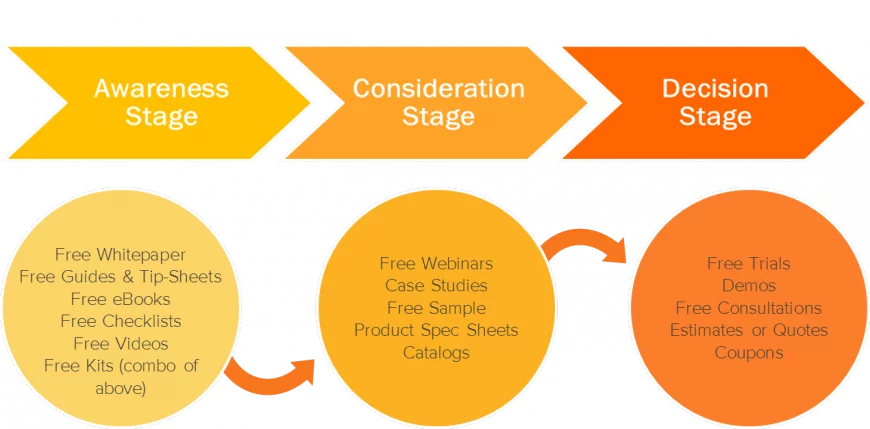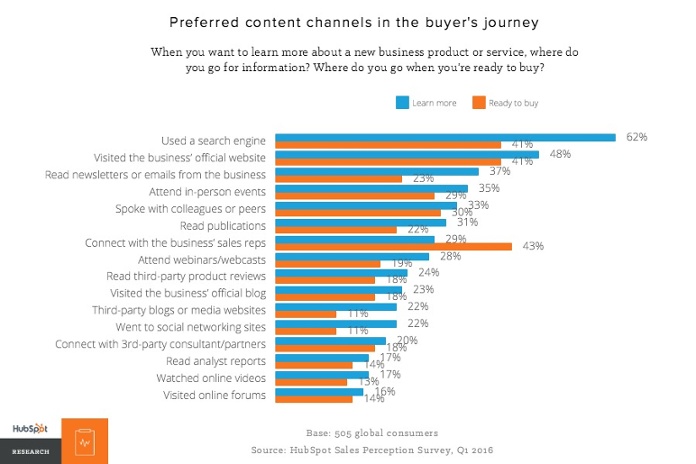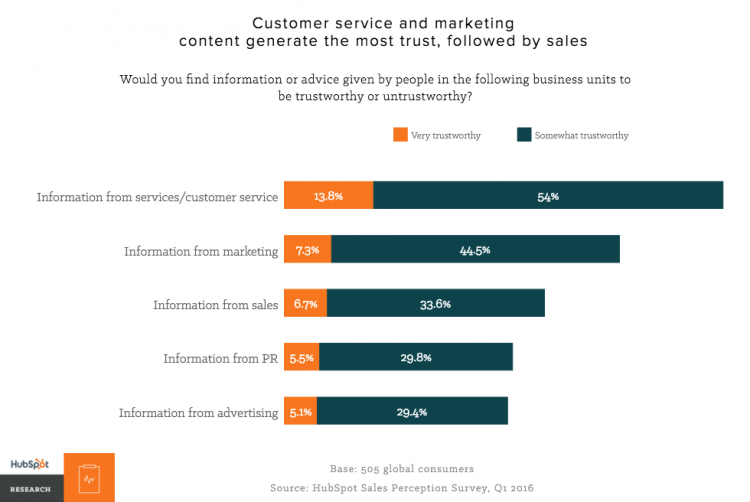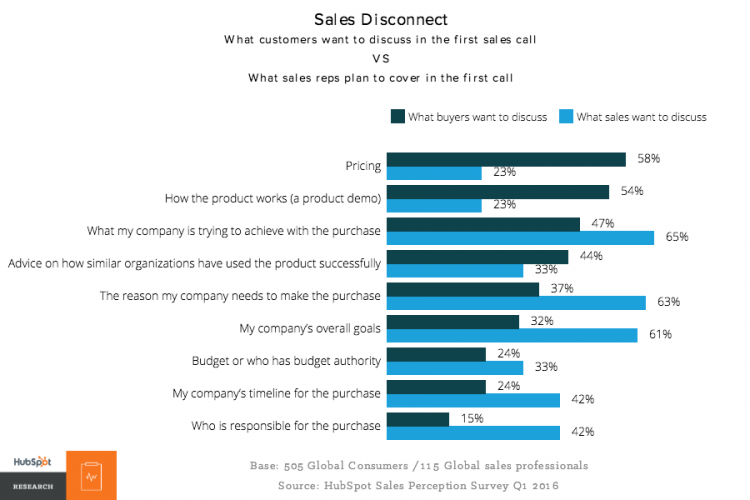Marketers in general, and content marketers in particular, are under a lot of pressure these days.
We’re expected to deliver the right content to the right people, at the right time, in the right format, and on the right channel and device.
That’s a lot to get right.
Of course, this situation begs the question: how do we know what’s “right” for our audience at any given point in their individual buyer’s journey?
The easiest way to figure that out is to ask them simple, straightforward questions at various stages of their journey. And, of course, the best way to ask those questions is with a survey.
Let’s take a look at the three most commonly recognized stages of the buyer’s journey and how we can use surveys to inform the content we provide to prospective customers. By asking smart questions at the right times, we can craft truly useful content that helps both our customers and our bottom line.
The Buyer’s Journey Defined
Although there are many complex infographics and visualizations of the buyer’s journey out there, we’re going to keep things simple here.
Even though most buyers won’t travel such a simple, linear path to purchase, they’re likely to be in all three of these stages at some point before engaging with a salesperson or clicking a “buy” button.
Simplifying our view of this journey helps us determine what types of questions we need to ask our prospective customers and what kind of content will be the most useful to them.
They might not consume our content in the order we imagine, but as long as it’s created with their real needs in mind, it should provide genuine value.
Content and Survey Questions for Awareness
In the Awareness stage our buyers are encountering some kind of problem or opportunity, but they probably aren’t looking for our product or service specifically.
That mean it’s our job to provide content that helps them solve that problem or take advantage of that opportunity. The goal of content in the Awareness stage is to be useful, not sales-driven.
As we can see in the graphic above, people in the Awareness stage tend to favor the following types of content:
- Whitepapers
- Guides and tip sheets
- Ebooks
- Checklists
- Videos
But before we can produce any of these, we need to understand our buyers’ problems and/or opportunities. What exactly has driven them to seek out information?
Hubspot’s recent Sales Perception Survey reports that when people want to learn more, they typically use a search engine or visit a business’ website:
That means that to reach them with survey questions, we can simply add a website intercept survey to high traffic pages on our website. For the best, most actionable data, we suggest asking very specific questions.
Asking Awareness Questions the Right Way
For example, if we’re selling running shoes, we might ask, “What’s your biggest running challenge right now?” rather than, “What brings you to the site today?”
The first question is focused on the person and their problem, not our website. It’s not only going to get us better data, it’s more likely to create trust in a visitor because it’s clear that we’re interested in how we can help them.
Make sure that if you’re providing options you also include an “Other” option that lets visitors write in their own answer.
These open text responses will be more challenging to analyze, but they may also reveal new challenges and topics that you never thought to cover in your content.
Creating B2B Trust With Survey Results
For those marketing to B2B buyers, running independent studies using surveys can be a great way to establish trust and authority with buyers in the Awareness stage.
The Hubspot study that I cited above is a great example of this approach.
Hubspot wants to reach sales people, so they conducted research that would help solve problems that audience is likely to face. They surveyed consumers and asked about their preferences when communicating with sales, then compiled the data into easy-to-consume charts and graphs that would help sales people do their jobs more effectively.
Here’s another example from their Sales Perception Survey:
If you’re not sure how to get started on a project like this, you can use your website intercept data to identify common problems that your audience is facing. Then you can evaluate whether or not launching a large research project and publishing the results might be a good way for your brand to become a trusted resource for them.
Enhancing Consideration Content With Surveys
Once your audience has researched possible solutions to their problem, they begin vetting their options in earnest.
Webinars are one of the most common forms of content that people consume at this stage, and surveys are a great way to add value to webinars for both yourself and your audience.
First, consider using quizzes or polls to engage attendees who arrive early. Some good questions for this stage include:
- What do you hope to learn from the webinar?
- What’s your biggest problem/opportunity/hurdle right now? (Be sure to customize this to be more specific to your webinar’s topic.)
- What’s your favorite ice cream flavor? (These and other ice breaker questions can help get people chatting before the webinar starts.)
As with website intercept surveys, make sure that you’re keeping questions focused on your audience and their needs. Even if you know you’ll be using the data to drive product development or content strategy, don’t ask questions that are clearly all about you.
Second, make sure you collect feedback from attendees once the webinar is over.
A quick NPS question can be a great way to gauge overall response; or you can also ask 3-5 specific questions about the webinar if you’d like more detailed insight into attendees’ experiences.
You’re likely to get the best response rate if you ask for feedback immediately after the webinar, but you can also include a link to the survey in your follow-up email to attendees.
Driving Decisions with Survey Data
The final stage of the journey involves potential customers making a decision about a purchase, and it’s the one that most often includes contact with a salesperson.
These final conversations may include a demo of the product itself, and at this point you need to make sure that you’re coming to the conversation armed with examples and ideas that are highly relevant to your customer’s specific goals.
One of the best ways to align demos and conversations with customer needs is by sending a survey in advance of the call.
This gives a prospective customer the opportunity to tell you more about what they hope to cover on a sales call, so the salesperson can prepare to wow them and win their business. Armed with basic survey data, your sales team can avoid the disconnect between what they hope to discuss and what a prospect has in mind.
Create a Better Journey With Surveys
Whether you’re looking to improve your sales and marketing efforts during Awareness, Consideration, or Decision making, surveys can help take your content to the next level.
By allowing you to engage with real customers about their real problems, surveys can allow you to create valuable resources that can help your audience and improve your conversions.








